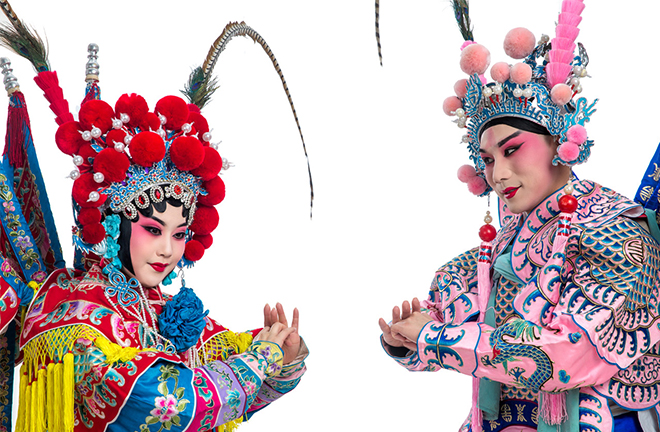Art enhances human health and well-being

Peking opera, is a performance art incorporating singing, reciting, acting, and martial arts. Photo: TUCHONG
According to human perceptual forms, art can be categorized as visual art, auditory art, audiovisual art, and visual-imagination art. As a product of human civilization, art not only has aesthetic value but can also produce powerful therapeutic effects in fields such as healthcare and special education, helping safeguard human health and fostering strength and resilience in individuals.
Integrating art with health and aesthetics
Today, various factors such as uneven socio-economic development, information overload, and pressure linked to employment and livelihood lead to notable fluctuations in public emotions, posing enormous risks to physical and mental health. Against this background, the relationship between art and health has gradually garnered the attention of the academic community.
Health management concerns “managing” and “being managed,” with the latter being more prevalent at present. For instance, artistic activities such as singing, painting, performing, and playing musical instruments play an important role in stress relief, intervention in mental and behavioral disorders, rehabilitation, pain relief, and end-of-life care. Individuals can also actively manage their health by means of art, building and optimizing their internal structure, such as managing their emotions and thereby restoring order to their lives.
Art and beauty are inseparable. Artwork, rooted in the world of self-awareness, connects the conscious worlds of different individuals, enabling empathy and appreciation. In the pursuit of art and beauty, humans purify their mind, nurture their character, cultivate aesthetic sensitivity, and enhance their aesthetic intelligence. While there are a variety of aesthetic goals, the ultimate desired outcome can be described as being a “perfect person” whose body, emotions, mind, and spirit are holistically integrated.
Health management and aesthetic goals complement and facilitate each other. On one hand, aesthetic goals serve as intellectual support for health management. Artwork bridges the conscious worlds of creators and audiences, allowing for emotional resonance, catharsis, solace, and stress relief. On the other hand, health management provides a material guarantee for aesthetic goals. Good health is the precondition for all productive and intellectual activities. Health conditions can cause physical pain and emotional stress, distract individuals, and leave them with little energy to appreciate art. Health management can improve the quality of life and ensure sustainable pursuit of art.
Art is both functional and aesthetic
Art, with its functionality and practicality, has become an integral part of human life.
First, art possesses an aesthetic function. When appreciating art, the audience can immerse themselves in vivid and interesting images and beautiful and harmonious melodies, thus refining their aesthetic taste, enriching their intellectual life, and enhancing their sensitivity to the beauty of life and art.
Second, art is educational. Artwork conveys values, and excellent works of art can guide the audience to improve their moral sentiments and view life and social realities properly. Moreover, art can make the learning process more interesting and stimulate individuals’ enthusiasm for learning, imagination, and creativity.
Third, art is therapeutic. For example, research shows that singing conveys a number of benefits, including improving breathing habits, enhancing heart vitality, stimulating intestinal activity, improving the circulatory system, regulating blood pressure, relieving tension, anger, and stress, as well as enhancing memory.
Fourth, art can function as entertainment to some extent, bringing enjoyment and pleasure to individuals living a stressful life.
Art not only nourishes the human mind but also serves practical purposes in people’s lives, profoundly influencing physical and mental health as well as social harmony. The government and all sectors of society should fully recognize the value and role of art, increase investment in and support for art, promote the popularization of art, and encourage the public to participate in art creation and appreciation. Artists should continue to innovate the forms and techniques of artistic expression, so that art becomes closely connected to individuals’ lives and minds, further contributing to social progress.
Yang Lijun is an associate professor from the School of Music at Shanxi University.
Edited by WANG YOURAN
